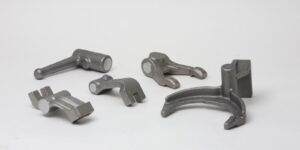-
Investment casting: A modern take on an ancient process
Investment casting, also known as lost-wax casting, is a manufacturing process that has been used for centuries to create intricate metal objects. The process begins with the creation of a wax pattern, which is then coated with a ceramic mold. The wax is then melted out, leaving a void in the mold that is filled with molten metal. Once the metal has cooled and solidified, the mold is broken away, leaving behind a finished casting.
Investment casting is a versatile process that can be used to create a wide variety of metal objects, including jewelry, tools, and machinery. It is particularly well-suited for creating objects with complex shapes or delicate features.
Investment casting is a versatile process that can be used to create a wide variety of metal objects, including jewelry, tools, and machinery. It is particularly well-suited for creating objects with complex shapes or delicate features.
The advantages of investment casting
Investment casting offers a number of advantages over other manufacturing processes, including:
- Precision: Investment casting can produce very precise castings, with tolerances of up to ±0.005 inches.
- Complexity: Investment casting can be used to create castings with complex shapes or delicate features.
- Versatility: Investment casting can be used to cast a wide variety of metals, including steel, stainless steel, aluminum, and bronze.
- Cost-effectiveness: Investment casting can be a cost-effective manufacturing process, especially for small production runs.
The investment casting process
The investment casting process consists of the following steps:
- Pattern making: The first step is to create a wax pattern of the object to be cast. The pattern can be made by hand or by using a 3D printer.
- Mold making: The wax pattern is then coated with a ceramic mold. The mold is made by pouring a slurry of ceramic material around the pattern.
- Wax removal: The wax pattern is then melted out of the mold, leaving a void in the shape of the object to be cast.
- Casting: Molten metal is then poured into the mold. The metal fills the void and solidifies, forming the finished casting.
- Finishing: The casting is then removed from the mold and finished to the desired specifications.

